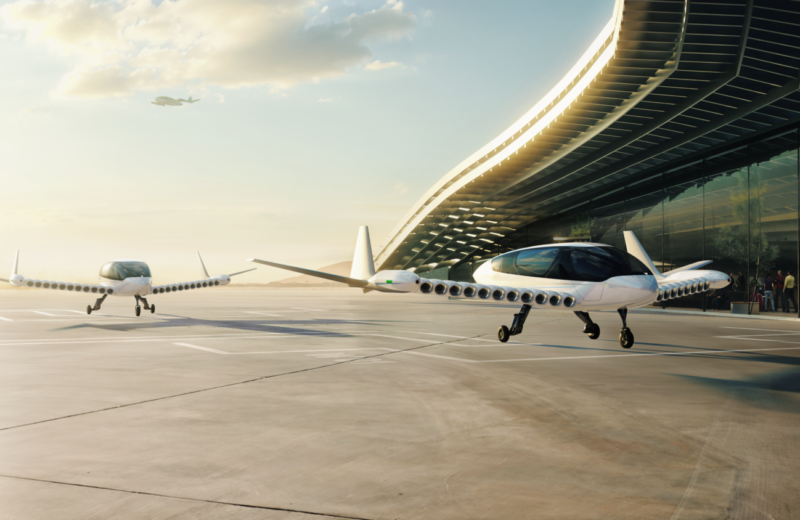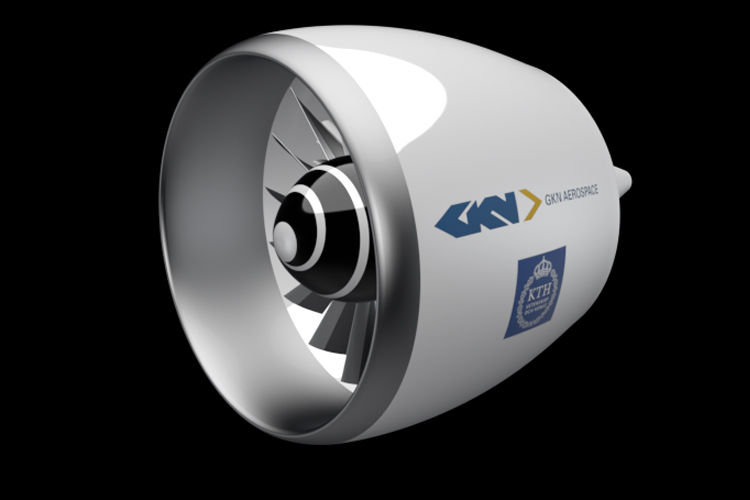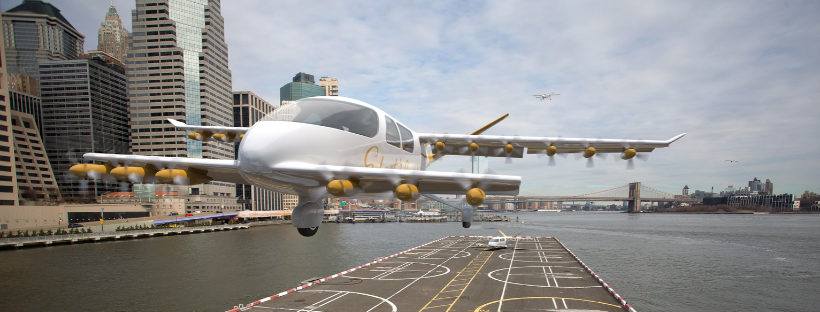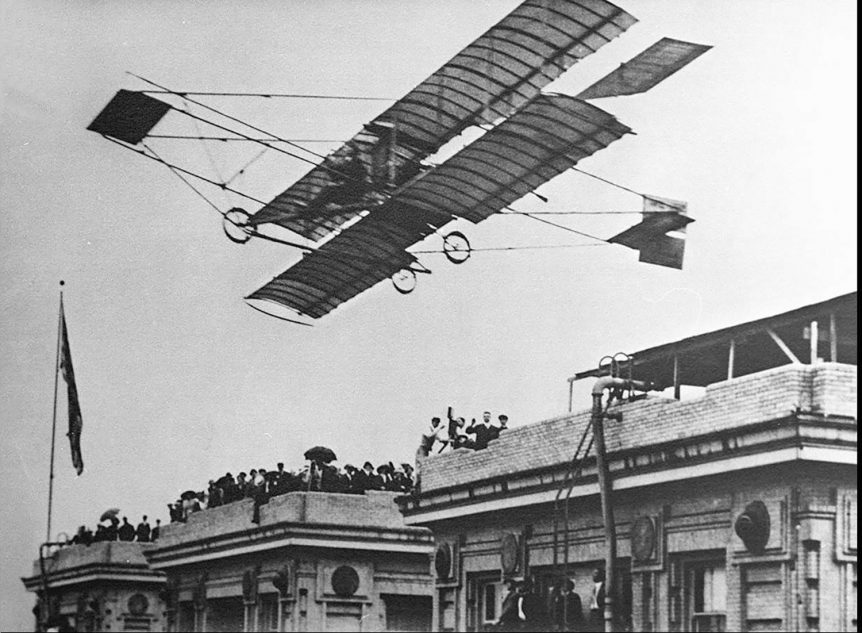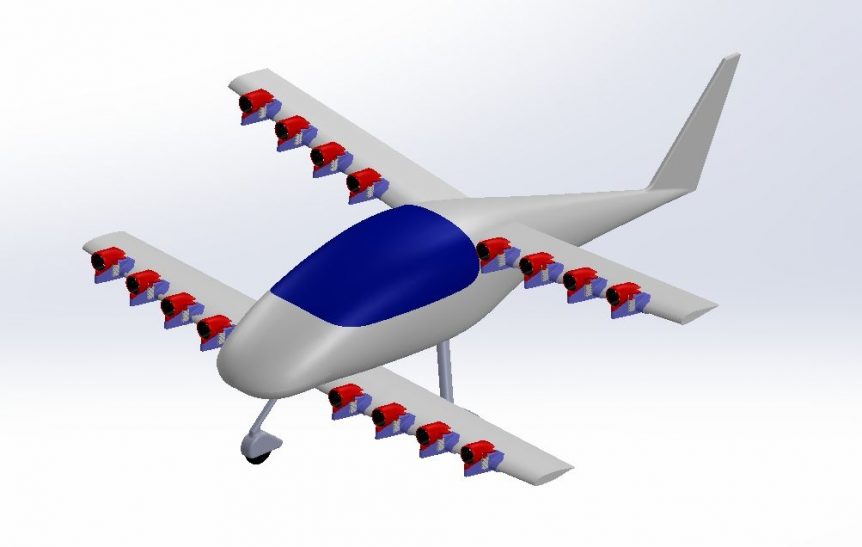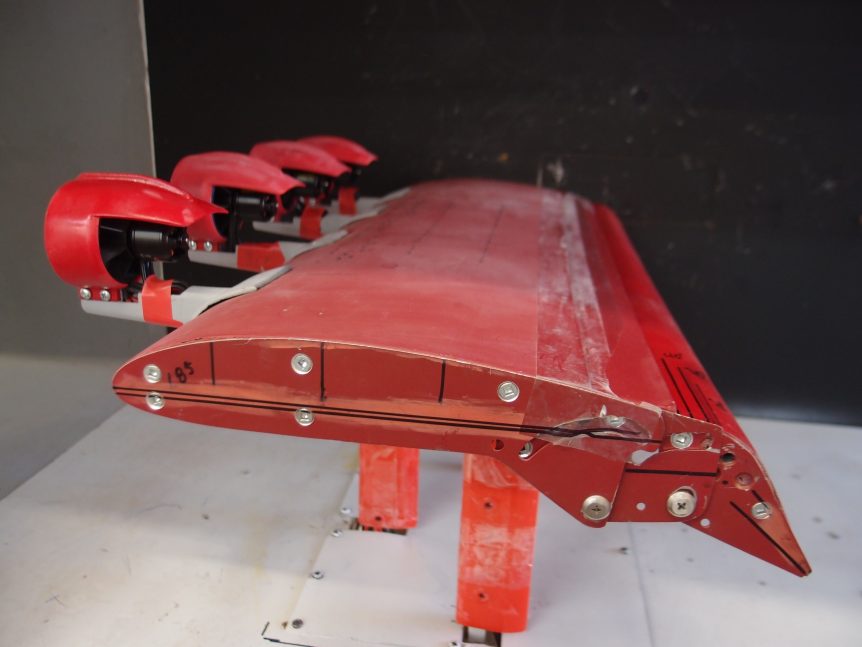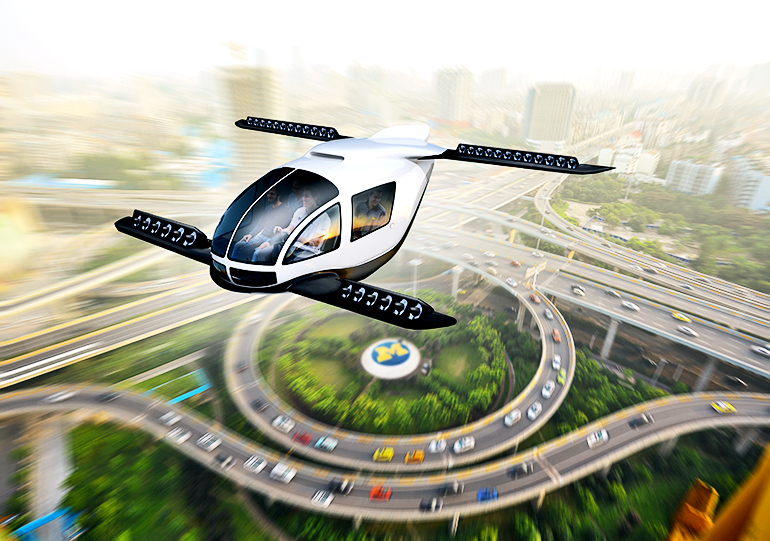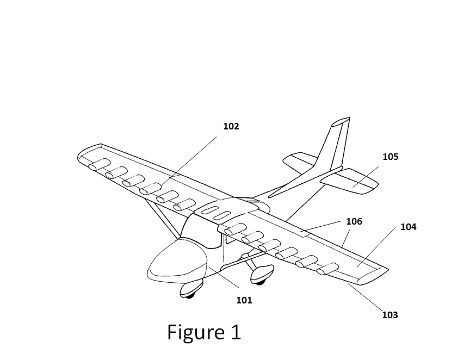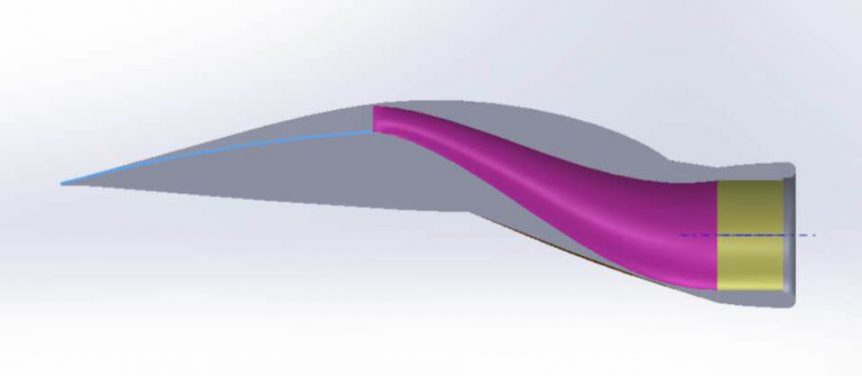Mark Moore had a long career at NASA, followed by his leadership of Uber Elevate, the car-sharing service’s attempt to emulate their terrestrial cab competition in a more skyward realm. Moore left all that behind to form his own company, Whisper Aero, which recently unveiled its Whisper Jet electric ducted fan propulsor. “Whisper” is more than just a trade name here. Moore and his team have created an electric ducted fan propulsion system that seems to be far quieter than anything else flying. Whisper Aero plans to supply these systems to airframe manufacturers, but not to produce any aircraft itself. What’s All the Noise About? Moore works from the standpoint that reducing noise is paramount in gaining community acceptance of AAM (Advanced Air Mobility)* machines. If Mark is correct in his assessments, which seem borne out by recent tests, his ultra-quiet propulsors should be a big part of future urban and regional flight. One dictum of propeller design is that …
The EleFanT in the Room
Electric Ducted Fans (EDF) may soon show some promise in full-size flight. Several projects are under way, including EleFanT, an interesting development in Germany by GKN and KTH (the Swedish Royal Institute of Technology). First, though, we’ll look at two stateside projects. David Ullman’s IDEAL EDFs fans are nothing new in the model aviation world, often powering large-scale models of actual jet fighters or trainers. Such model motors, combining their thrust, can augment lift and propulsion on light aircraft, and a few larger projects are attempting to utilize that promise. David Ullman, in Independence, Oregon has flown a Jabiru he rebuilt from a wreck with its Jabiru engine providing the main power, but augmented in thrust and lift by four small electric ducted fans (EDFs). The arrangement is a partial demonstration of IDEAL, which stands for “Integrated Distributed Electric – Augmented Lift” flight, using “thrust from distributed electric propulsion to improve the lift and drag performance of the aircraft during …
eCSTOL: Longer Range Commutes on Less Power
Competition is growing in the electric Vertical Take Off and Landing market, with 407 potential builders listed in eVTOL News. Vertical flight takes power, though, and with available batteries limiting range, most such vehicles can make only short hops. Alternatives that allow speedier, longer flights, in the form of electric Conventional Short Take Off and Landing (eCSTOL) aircraft are in development. Such craft offer the benefit of requiring less power for takeoffs and climbs, being more aeronautically-based than power-based. Airflow, for instance, claims operating costs for their eCTSOL craft is one-third that of an eVTOL or helicopter. We will look at three eCSTOL craft that seem to making headway at this time. The infrastructure (in two cases below) to support their flight may already exist. Airflow Curt Epstein, writing in Future Flight, under the headline, “Infrastructure Needs for eSTOL and eVTOL Aircraft May be Closer than Imagined,” notes the “intense study” being undertaken. Speaking at the Vertical Flight Society’s Electric …
Airflow: Coming to a Rooftop Near You?
“1 pilot, 500 pounds of cargo,” reads Airflow’s headline for its electric STOL (Short Take Off and Landing) aircraft. Reaching for the “middle-mile” cargo delivery market, Airflow’s new design promises to be four times faster than trucks, operate at one-third the cost of helicopters or eVTOL (electric Vertical Take Off and Landing) vehicles, and require only 150 feet for takeoffs and landings. eVTOL Reconsidered Airflow’s management and engineering team come from previous experience in the eVTOL world, most recently with Airbus’ Vahana program. Headed by Marc Ausman, The team has “over 60 years of aerospace experience,” with companies including Eclipse Aviation, Northrop Grumman, Uber Elevate, Airware, and Scaled Composites. The team determined their design can carry a pilot and a 500-pound payload using less power than comparable eVTOLs because multirotors carry the full weight of the aircraft at all times, or for some designs, until they are able to transition to full forward flight. This helped form the decision to …
JabirWatt: PAI and DEP with David Ullman
Electric aircraft, especially in their early state of development, will require aerodynamically capable forms or extremely light structures, or both. That may account for the early adoption of sailplanes as test beds. These are graceful and high performance units, but not all that practical for hauling loads or for daily commuting. Other first attempts adapted ultralight, but not necessarily aerodynamically efficient structures to make electric flight possible. David Ullman makes use of two dynamic technologies, PAI and DEP, to achieve performance with the potential for great practicality. PAI and DEP David, a professor emeritus in mechanical engineering, is also an enthusiastic pilot and inventor. His texts on the design process and decision making are best sellers. Recently, he’s been exploring the potential of Propulsion Airframe Interaction (PAI) and Distributed Electric Propulsion (DEP) by augmenting the power and lift of a conventional aircraft with Electric Ducted Fans (EDF). A Creative Airport Community If you are fortunate enough to visit the Independence, …
The I.D.E.A.L. Becomes Real with JabirWatt
Dr. David Ullman taught mechanical engineering and project management for over three decades, and his books on the mechanical design process are consistently sought after. His current project, JabirWatt, is hangared at his home in Independence, Oregon, and combines the internal combustion propulsion of its Jabiru engine with the lift-enhancing addition of four electric ducted fan motors on the wings. A project partner, Vince Homer, lives nearby on the airport. Both have hangars filled with things of genius, including the well-instrumented wind tunnel on which David tests his ideas (or I.D.E.A.L – Integrated Distributed Electric-Augmented Lift). Slightly different from the approach promised in his presentation at last year’s Sustainable Aviation Symposium, the modified Jabiru sacrifices its rear seat for a large battery box to power the (now) four electric ducted fans (EDFs) atop the inner part of the wing. He’s since presented at this year’s CAFE Foundation symposium and at AirVenture 2019. Different From a Maxwell Your editor has joked …
Faster, Cleaner AND Less Pricey?
University of Michigan Research Sprinkled with Optimism (or Not) Can electric Vertical Takeoff and Landing (eVTOL) machines provide the swift crossing of urban distances at a price that will attract the non-flying public? Can they do so while keeping pollution in check? A University of Michigan study, funded in part by Ford Motors, concluded that taking a short (depending on definition) trip in an autonomous electric vertical takeoff and landing machine might not only be quicker than a ground-bound journey through gridlock, but might even be less expensive. These two factors are important if we are clean the toxic atmosphere that hangs over our major cities, at least partly brought about by the constant transit of personal automobiles, public buses, and large trucks. Another aspect of the study, though, showed that certain trips will be less polluting if taken by conventional automobiles. This dichotomy comes from the nature of eVTOL flight compared to the distances to be traveled. Researchers published …
David Ullman Receives Patent on IDEAL Airplane
David Ullman a Professor Emeritus at Oregon State University, has used his expertise in mechanical engineering to design his IDEAL airplane. That stands for Integrated Distributed Electric-Augmented Lift, and like all good projects with good acronyms, almost explains itself. Recently, the U. S Patent office thought the IDEAL is worthy of being patented. It might be helpful to read the full patent, filed with working partner and neighbor Vincent Homer, because the ideal looks simple, but has years of development behind it. The two live in Independence, Oregon, on an airport that includes hangars on every house and taxiways linking them to the main runway. Both their hangars are filled with evidence of their skilled handiwork. Vincent’s houses giant models and evidence of aeronautical investigations. David’s shelters a very large wind tunnel, used to help verify his computations about blowing air over the wing and augmenting the lift while providing thrust. On one wall hangs the twisted wing strut that …
Sustainable Skies in San Francisco
I’m writing this in the first person, rather than the usual third-person voice that allows me to remain objective about things on which I report. In this case, I have been the recipient of much joy over the last ten years from being an observer of the ongoing progress in electric aviation. Dr. Brien Seeley, founder of the Sustainable Aviation Foundation, asked me to begin writing a blog about electric aviation in 2009. One of my original postings concerned a Kitplanes Magazine contributor, David Ullman – who was this year’s Sustainable Aviation Symposium’s keynote speaker. In 2009, he predicted a great future for electric aviation – most of which has come to pass, and some of which he is creating in his hangar with his fully-instrumented wind tunnel and ambitious blown-wing design. He proposes something called USTOL, Ultimate Short Takeoff and Landing, aircraft that will use a dynamic relationship between their power and lift systems. His vehicle for demonstrating this …
David Ullman: Flying on Multiple Tiny Motors
David Ullman, a professor emeritus at Oregon State University, predicted electric flight’s future in articles in 2009* and 2010**. His predictions have come (mostly) true and David is working to fulfill the rest. His background in mechanical and aeronautical engineering provides credibility for his prognostications, and he’s taking practical steps to take electric aviation to a next, very creative level. While Uber’s Elevate Summit in Dallas earlier this year focused on big-money players in the vertical aviation world, David and co-creator Vincent H. Homer promoted their paper, “The IDEAL for Near-VTOL Aircraft.” IDEAL represents “Integrated Distributed Electric – Augmented Lift” flight, using “thrust from distributed electric propulsion to improve the lift and drag performance of the aircraft during takeoff, cruise and landing.” As their paper explains, VTOL flight requires power equal to 1.25 times the weight of the aircraft to ensure secure takeoffs and landings. An IDEAL aircraft would require thrust equaling about one-third of the STOL craft’s weight to …
- Page 1 of 2
- 1
- 2

